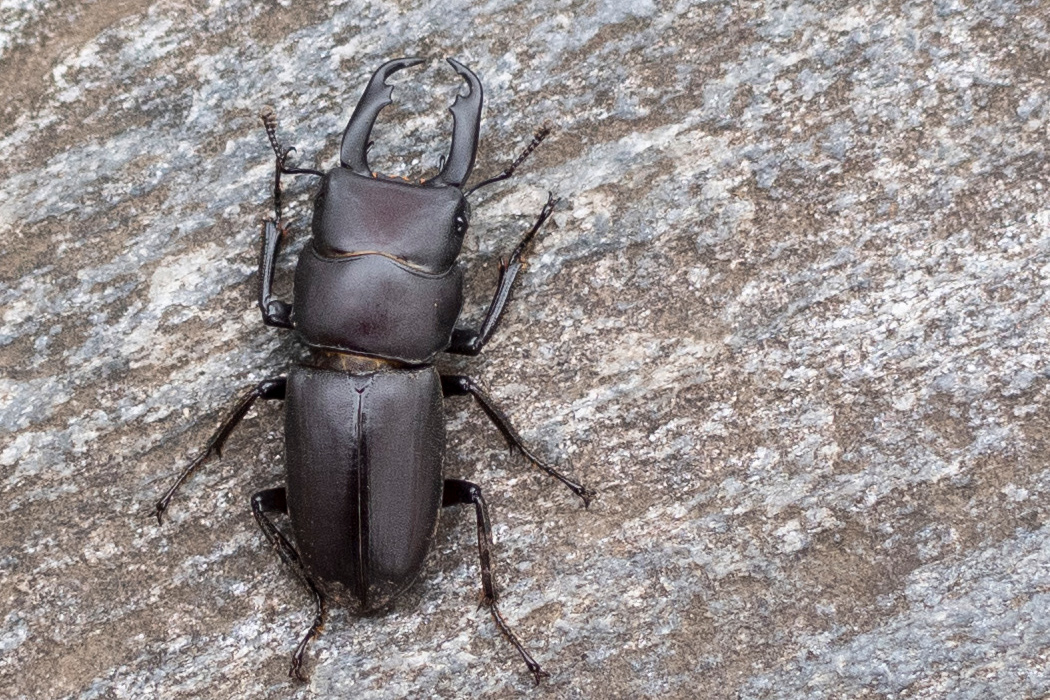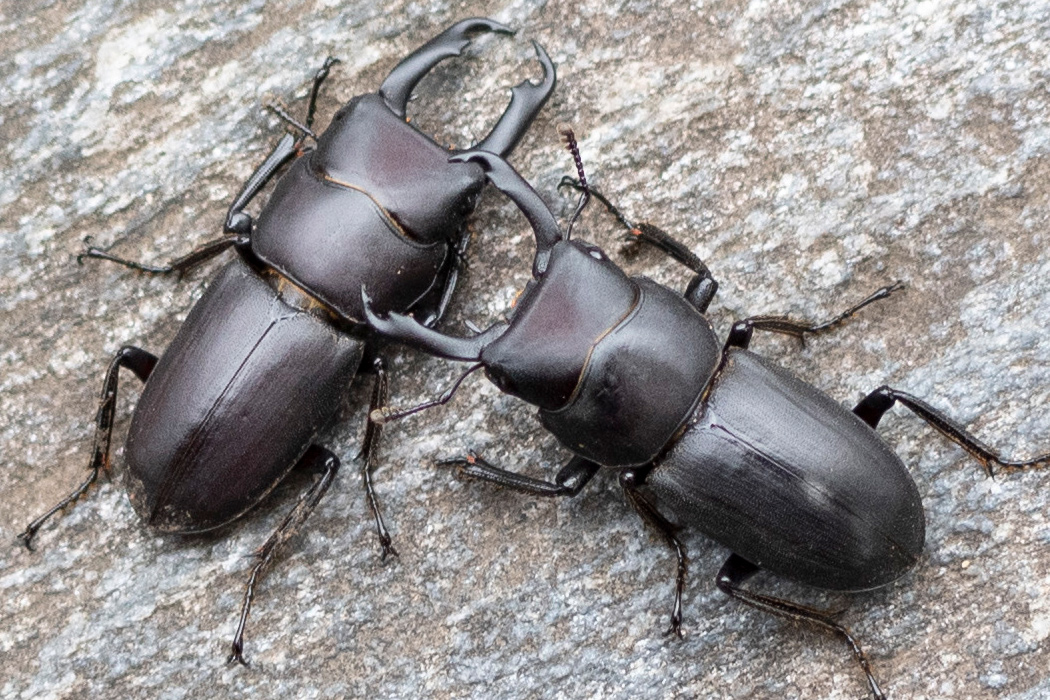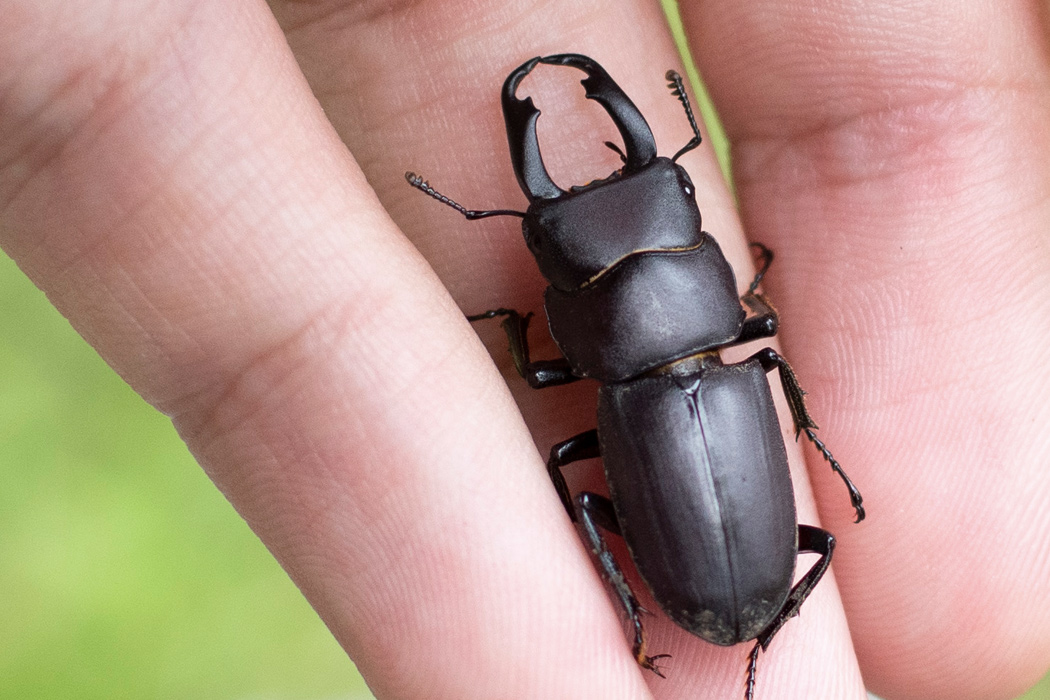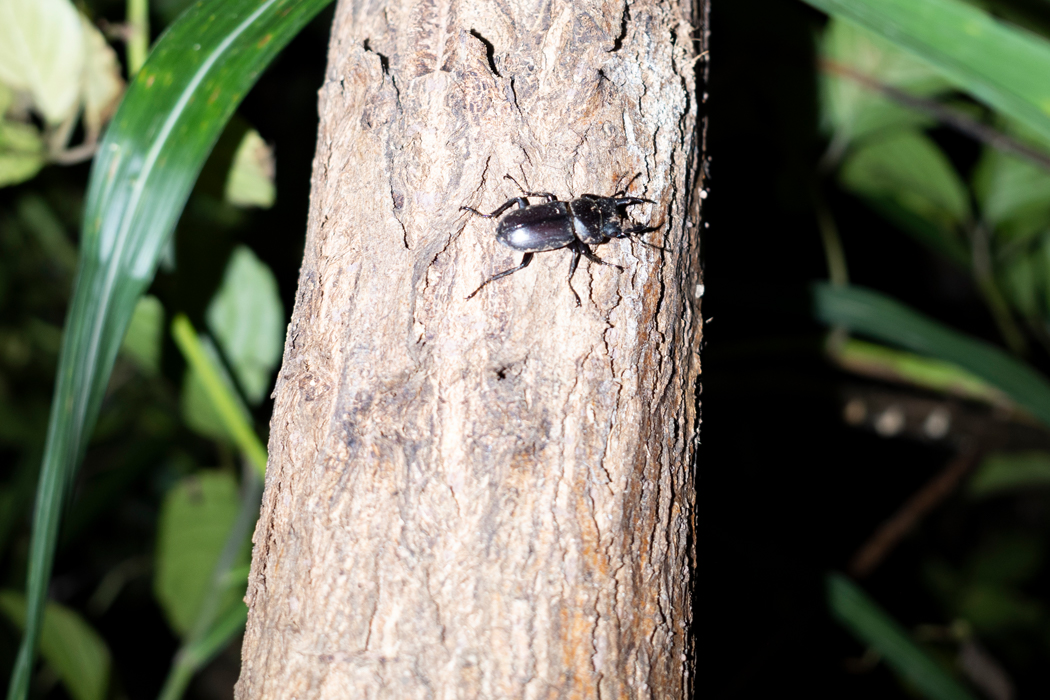
---
You can find them in the city if you look for them.
| Scientific name | Dorcus rectus |
| English name | --- |
| Japanese name | 小鍬形 |
| Classification | Insecta |
| Classification details | Coleoptera Lucanidae |
| Full length | ~5cm. |
| Distribution | Distributed in East Asia. In Japan, from Hokkaido to Kyushu. |
Characteristic
A stag beetle that can grow up to just under 6cm. It is mostly black, but depending on how the light hits it, it can take on a brownish hue. Males are long and slender, with large mandibles with inner teeth along the way.
It is a member of the Dorcus genus, and is flatter than the Sawtooth Stag Beetle, and looks like a flat stag beetle that is about twice as small. It is also very similar to the Striped Stag Beetle, but its wings are not striped and its jaws are large.
How to find a small stag beetle
Stag beetles are timid, and when they sense danger, they hide by hiding in hollows or between skins. When searching for them at night in trees, they will be noticed by their footprints or presence, so you will need to quickly shine a light on them or pull out the individual hiding in a shallow hollow. If you can't see their jaws, they will likely be mistaken for other black beetles such as the Kimawari, so it's a good idea to carefully examine the shape of their abdomen in advance. You can also shake the tree to pick up an individual from the tree.
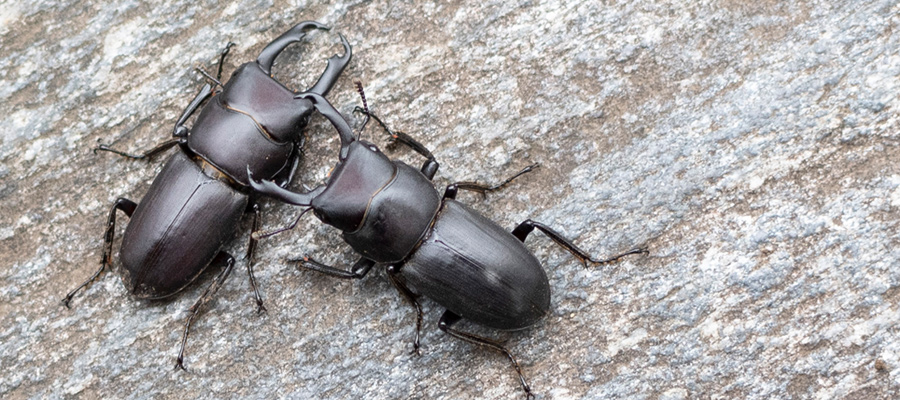
Ecology
They emerge around May and are often seen in trees that are oozing sap or near streetlights. They live in broadleaf forests, including sawtooth oaks and konara oaks, but they will come to cities if they are in their habitat, even if they are not deep in the mountains. They are also often seen in willow trees on riverbanks.
Some individuals survive the winter and live until the next year.
Habitat
Sawtooth oak tree oozing sap (night)
I found this one in a tree that was oozing sap in Hachioji City. Two males were fighting at the entrance to a hole in the tree, and I was able to pick up the one in front, but the larger one in the back had escaped.
This is not limited to small stag beetles, but if you get used to finding small stag beetles in the hollows of trees and gaps in the bark, you can observe many of them. The impressive jaws are what catches your eye, but if you remember the whole body, you can find the hidden individual.
Riverbed in the middle reaches of the Tama River
There are many willow trees growing in the riverbed of the Tama River. Many stag beetles were hiding in holes about 1 cm in diameter in the willow trees.
The entrance to these holes is narrow, but they are long and thin vertically, so once they have escaped, it is difficult to collect them.
If you are collecting them after dark, do not shine a light on them until just before you collect them so that they do not notice you.
Pictures
Introducing a picture of ---.
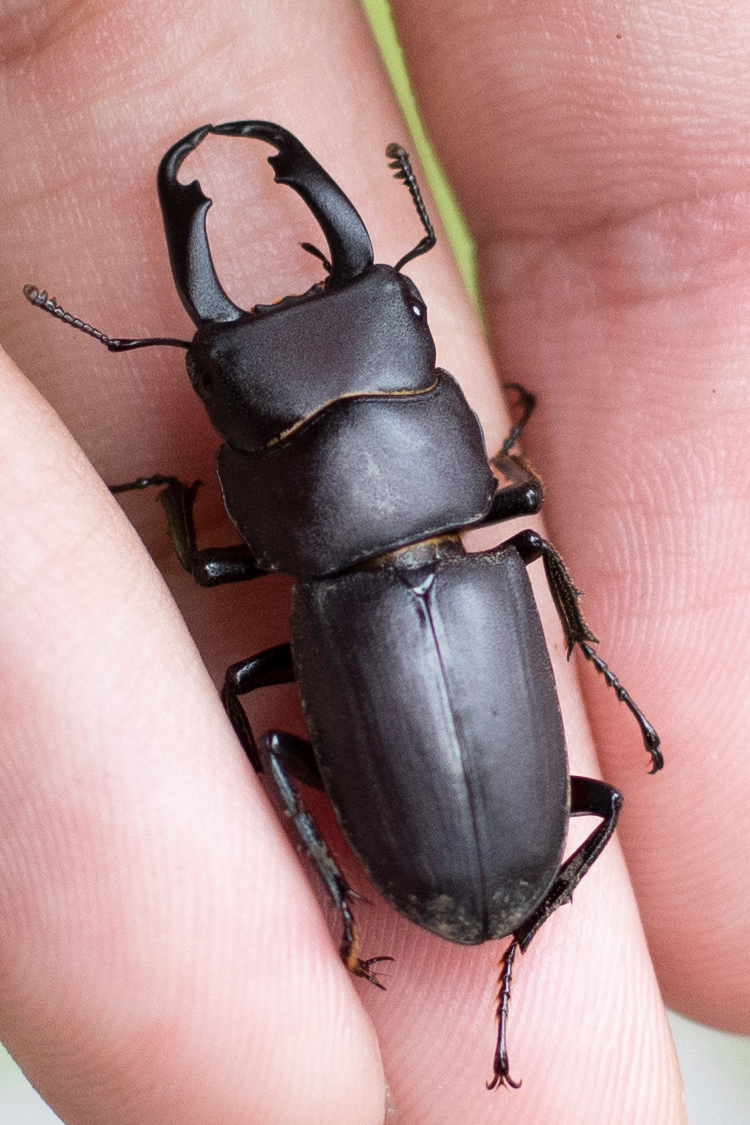
Picture book

Common pochard
Bright reddish-brown plumage.......ead more.

Pale grass blue
butterflies that can be seen even in the city......ead more.

wind flower
white flowers blooming in pairs.......ead more.

Chinese bamboo pheasant
gray and orange head.......ead more.

Geisha distinctissima
Small leaf-like shape......ead more.
